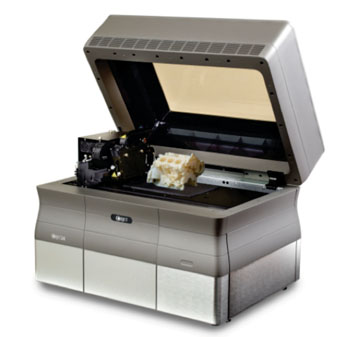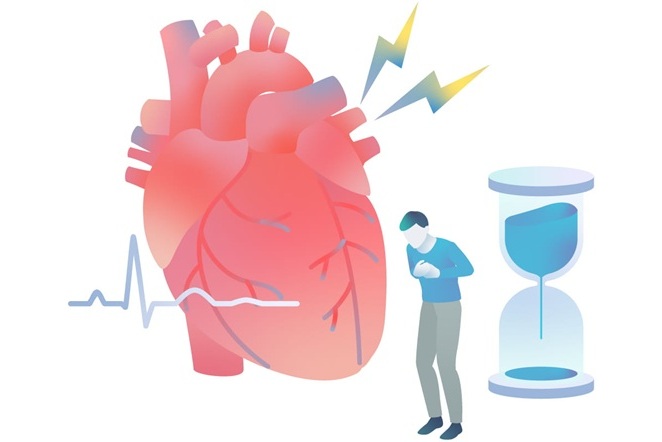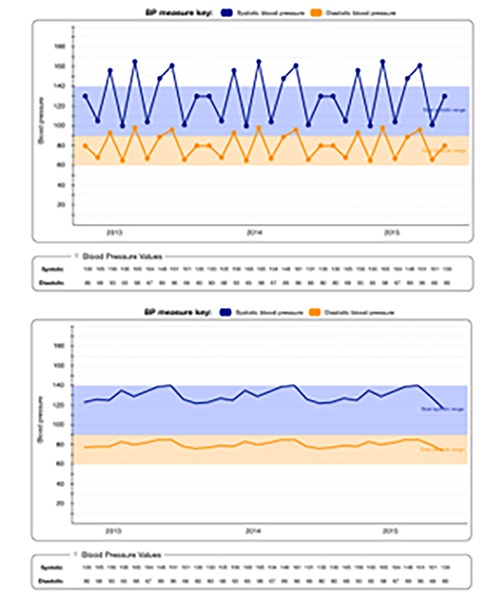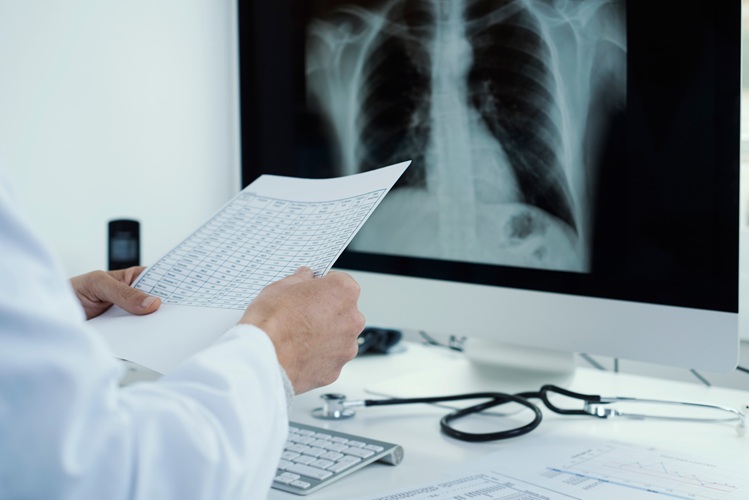3D Printers Deployed in 12 UK hospitals 
|
By HospiMedica International staff writers Posted on 17 Sep 2014 |

Image: The Stratasys Objet24 Pro 3D printer (Photo courtesy of Stratasys).
3D printers convert CT scans to 3D model as surgical guides in NHS Hospitals.
Stratasys (Rehovot, Israel) 3D printers have been installed in 12 National Health Service (NHS; London, United Kingdom) hospitals to support the validation of patient surgery prior to an operation.
The printers will be supplied by Replica 3DM (Salisbury, United Kingdom), which was first established as a three dimensional (3D) modeling department of Salisbury District Hospital. The company has now extended its medical 3D printing capabilities to NHS hospitals across the United Kingdom. The deployment includes Stratasys Objet24 and Objet30 Pro 3D printers, which will convert patient computerized tomography (CT) scans into physical printed models for use as presurgical guides.
The 3D printed models will help surgical teams in the re-bending of titanium implant plates to the patient's exact specifications, thus eliminating potential problems during operations. The models can also be used as a visual aid when explaining the surgical procedure to patients. Other benefits include preoperative investigations across maxillofacial, orthopedics, neurology, spinal and ears, nose and throat wards, to identify the correct procedure. The use of the printers will also help reduce surgical procedure times, which in turn could lead to an overall decrease in theatre costs.
“To us, 3D printing and the medical profession go hand-in-hand, particularly in the planning of complicated procedures. A 3D model equips surgeons with a hands-on perspective which cannot be achieved by looking at a computer screen,” said Matthew Sherry, managing director and founder of Replica 3DM. “They can easily rotate, inspect and analyze each surgical procedure on a case-by-case basis, enabling them to pre-bend implants knowing that they will perfectly fit the patient.”
“In an industry where precision is paramount, the ability to produce highly accurate 3D printed surgical models and guides that mimic the look and feel of titanium implants can both lower costs and reduce the time required for patients to be anesthetized,” added Chris Baker, Northern European territory manager at Stratasys. “As a result, an increasing number of hospitals worldwide are integrating 3D printing into surgical planning procedures, which is having an immediate positive impact on the quality of patient treatment.”
Related Links:
Stratasys
National Health Service
Replica 3DM
Stratasys (Rehovot, Israel) 3D printers have been installed in 12 National Health Service (NHS; London, United Kingdom) hospitals to support the validation of patient surgery prior to an operation.
The printers will be supplied by Replica 3DM (Salisbury, United Kingdom), which was first established as a three dimensional (3D) modeling department of Salisbury District Hospital. The company has now extended its medical 3D printing capabilities to NHS hospitals across the United Kingdom. The deployment includes Stratasys Objet24 and Objet30 Pro 3D printers, which will convert patient computerized tomography (CT) scans into physical printed models for use as presurgical guides.
The 3D printed models will help surgical teams in the re-bending of titanium implant plates to the patient's exact specifications, thus eliminating potential problems during operations. The models can also be used as a visual aid when explaining the surgical procedure to patients. Other benefits include preoperative investigations across maxillofacial, orthopedics, neurology, spinal and ears, nose and throat wards, to identify the correct procedure. The use of the printers will also help reduce surgical procedure times, which in turn could lead to an overall decrease in theatre costs.
“To us, 3D printing and the medical profession go hand-in-hand, particularly in the planning of complicated procedures. A 3D model equips surgeons with a hands-on perspective which cannot be achieved by looking at a computer screen,” said Matthew Sherry, managing director and founder of Replica 3DM. “They can easily rotate, inspect and analyze each surgical procedure on a case-by-case basis, enabling them to pre-bend implants knowing that they will perfectly fit the patient.”
“In an industry where precision is paramount, the ability to produce highly accurate 3D printed surgical models and guides that mimic the look and feel of titanium implants can both lower costs and reduce the time required for patients to be anesthetized,” added Chris Baker, Northern European territory manager at Stratasys. “As a result, an increasing number of hospitals worldwide are integrating 3D printing into surgical planning procedures, which is having an immediate positive impact on the quality of patient treatment.”
Related Links:
Stratasys
National Health Service
Replica 3DM
Latest Health IT News
- Printable Molecule-Selective Nanoparticles Enable Mass Production of Wearable Biosensors
- Smartwatches Could Detect Congestive Heart Failure
- Versatile Smart Patch Combines Health Monitoring and Drug Delivery
- Machine Learning Model Improves Mortality Risk Prediction for Cardiac Surgery Patients
- Strategic Collaboration to Develop and Integrate Generative AI into Healthcare
- AI-Enabled Operating Rooms Solution Helps Hospitals Maximize Utilization and Unlock Capacity
- AI Predicts Pancreatic Cancer Three Years before Diagnosis from Patients’ Medical Records
- First Fully Autonomous Generative AI Personalized Medical Authorizations System Reduces Care Delay
- Electronic Health Records May Be Key to Improving Patient Care, Study Finds
- AI Trained for Specific Vocal Biomarkers Could Accurately Predict Coronary Artery Disease
Channels
Critical Care
view channel
Breakthrough AI Technology Accurately Assesses Heart Failure Severity
Heart failure (HF) is a complex condition where the heart cannot effectively pump blood to meet the body’s needs due to underlying medical issues. It is marked by recurring episodes and frequent hospitalizations.... Read more
New Approach to Visualizing Blood Pressure Data Can Help Better Manage Hypertension Patients
Sometimes, a patient’s blood pressure may be elevated in a doctor's office but normal at home, a phenomenon known as white coat hypertension. It is estimated that 10% to 20% of high blood pressure diagnoses... Read moreSurgical Techniques
view channel
DNA Origami Improves Imaging of Dense Pancreatic Tissue for Cancer Detection and Treatment
One of the challenges of fighting pancreatic cancer is finding ways to penetrate the organ’s dense tissue to define the margins between malignant and normal tissue. Now, a new study uses DNA origami structures... Read more
Pioneering Sutureless Coronary Bypass Technology to Eliminate Open-Chest Procedures
In patients with coronary artery disease, certain blood vessels may be narrowed or blocked, requiring a stent or a bypass (also known as diversion) to restore blood flow to the heart. Bypass surgeries... Read more
Intravascular Imaging for Guiding Stent Implantation Ensures Safer Stenting Procedures
Patients diagnosed with coronary artery disease, which is caused by plaque accumulation within the arteries leading to chest pain, shortness of breath, and potential heart attacks, frequently undergo percutaneous... Read more
World's First AI Surgical Guidance Platform Allows Surgeons to Measure Success in Real-Time
Surgeons have always faced challenges in measuring their progress toward surgical goals during procedures. Traditionally, obtaining measurements required stepping out of the sterile environment to perform... Read morePatient Care
view channel
Portable Biosensor Platform to Reduce Hospital-Acquired Infections
Approximately 4 million patients in the European Union acquire healthcare-associated infections (HAIs) or nosocomial infections each year, with around 37,000 deaths directly resulting from these infections,... Read moreFirst-Of-Its-Kind Portable Germicidal Light Technology Disinfects High-Touch Clinical Surfaces in Seconds
Reducing healthcare-acquired infections (HAIs) remains a pressing issue within global healthcare systems. In the United States alone, 1.7 million patients contract HAIs annually, leading to approximately... Read more
Surgical Capacity Optimization Solution Helps Hospitals Boost OR Utilization
An innovative solution has the capability to transform surgical capacity utilization by targeting the root cause of surgical block time inefficiencies. Fujitsu Limited’s (Tokyo, Japan) Surgical Capacity... Read more
Game-Changing Innovation in Surgical Instrument Sterilization Significantly Improves OR Throughput
A groundbreaking innovation enables hospitals to significantly improve instrument processing time and throughput in operating rooms (ORs) and sterile processing departments. Turbett Surgical, Inc.... Read moreBusiness
view channel
Expanded Collaboration to Transform OR Technology Through AI and Automation
The expansion of an existing collaboration between three leading companies aims to develop artificial intelligence (AI)-driven solutions for smart operating rooms with sophisticated monitoring and automation.... Read more















